I'm in the process of applying for a licence to trap crayfish in my local area so I decided to make myself the first of my traps.
First of all I will say that there are very strict requirements regarding the trapping crayfish within the UK. You may not trap crayfish without permission from the landowner and a licence issued by the Environment agency. On the application form you must state that the dimensions of your trap and that it complies with the requirements laid out in the application form. There is also other information you need to supply on your application such as where and when you intend to trap, what species of crayfish you intend to trap and the reason for trapping them.
If your application is successful then you will be issued a licence tag for each of the traps you intend to use and these have to be fixed to the trap when they are being used.
Another requirement that you must do including filling out a form listing the total number of crayfish and species trapped during the duration of your licence.
Further information can be found in a very useful leaflet entitled "Using the right trap: A guide to Crayfish trapping." issued by the Environment Agency and can be found here.
If you wish to apply for a licence the application form can be found here.
These are the dimensions of a trap that is legal within the UK

Additionally the mesh size cannot be more than 30mm at its widest point.
So first of all you need a roll of mesh, a pair of wire cutters and a load of cable ties

As the mesh is 100cm across I cut a length 60cm long off the roll
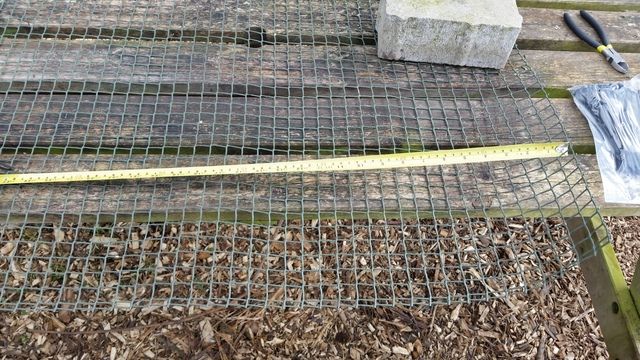
I then formed it into a tube 30cm across ensuring that the edges overlapped by 2 squares to for a good seal.
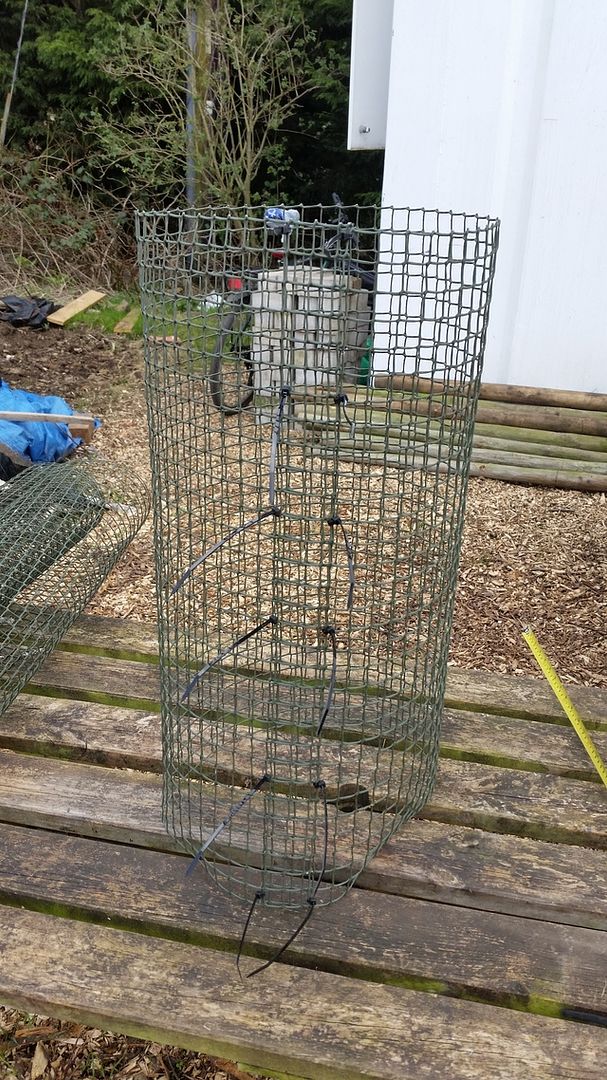
Once the main body of the trap had been formed I needed to make 2 cones to fit in each end. To make these cones I made a semi circle with a radius of 32 cm from a piece of thing fibreglass rod and cut the mesh off at each point the arc crossed. I also measure 2 squares in from the straight edge so I would have an overlap when forming the cone.

Unfortunately I forgot to take a picture of the semicircle of mesh after cutting it out before forming into a cone. When creating the entrance for the crayfish to go through you must make it not greater than 95mm so you don't accidently trap an otter. So to be safe I made a couple rings 90mm across and fitted that to the cone as you can see in the second picture.
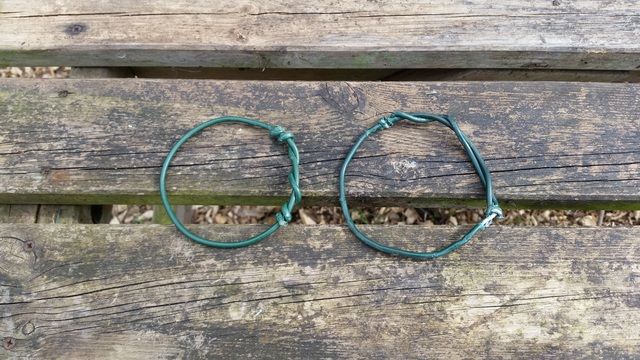
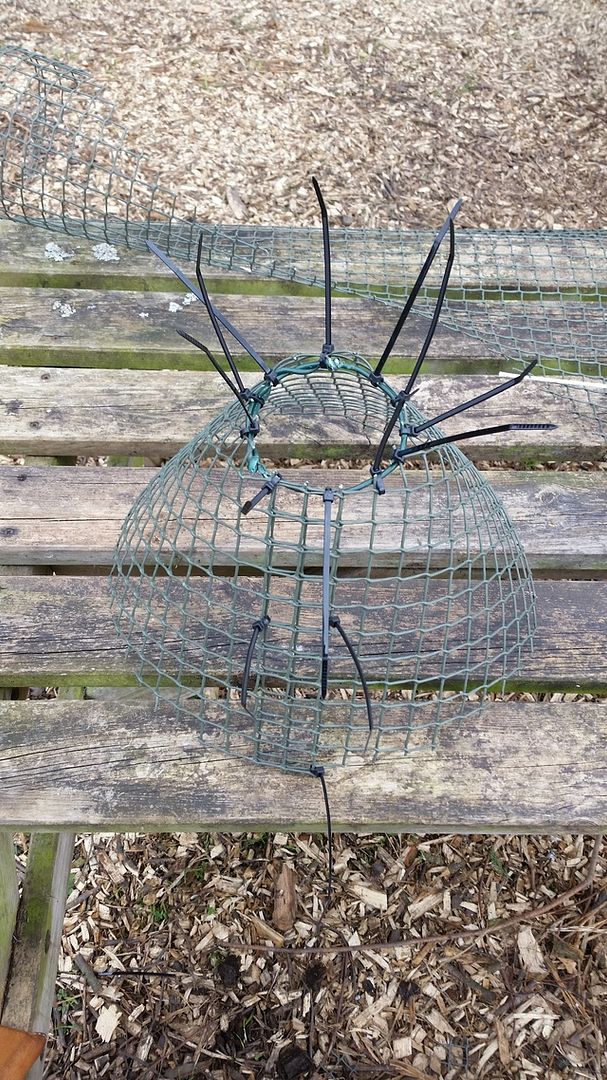
Once the cone has been formed it has to be fitted to the main body which, to say the least, is fun as it has a tendency to fall in and catch on the main body.
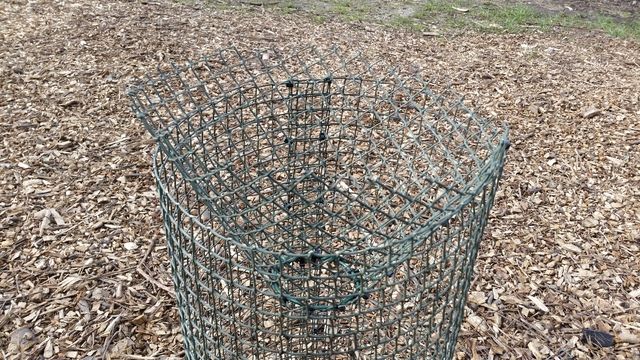
It was then fixed in place using a lot of cable ties so there weren't any gaps anywhere. Once you've fitted one cone you get to repeat the fun on the other end...
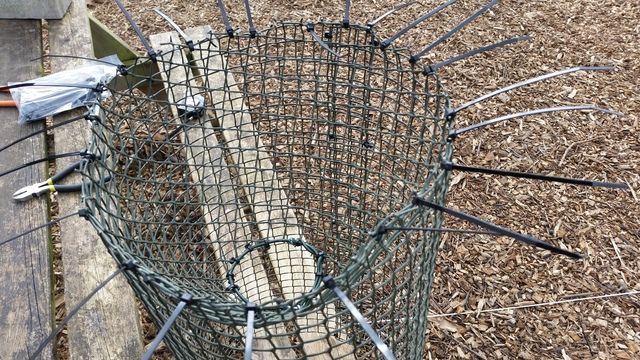
After fitting the cones you need to cut a door so you can get the crayfish out
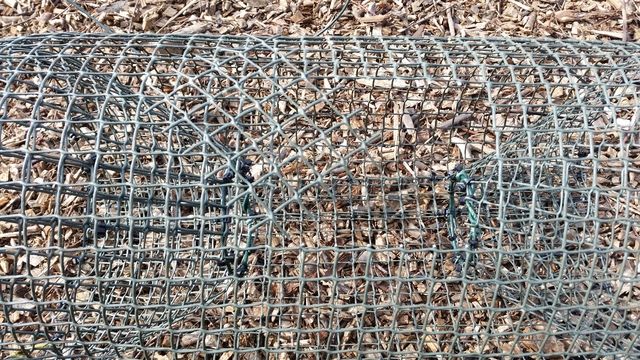
As the mesh I was using was a bit flexible I reinforced the edge of the entrance with wire so there was no give in that area.
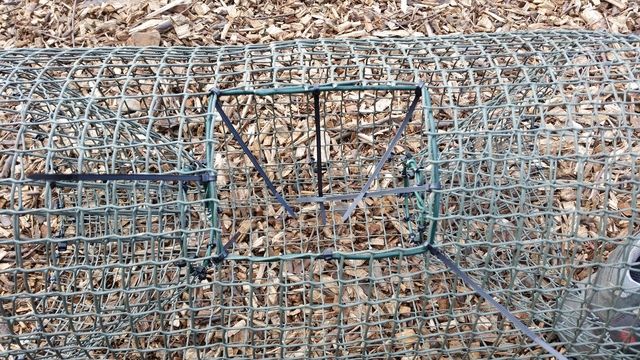
I then cut a door out of spare mesh and fitted it, again reinforcing it with wire to ensure a good seal
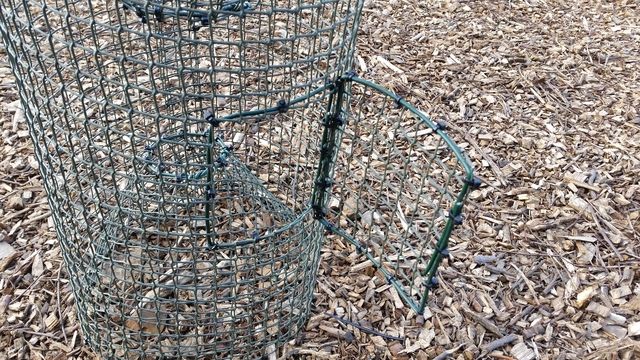
Once the door was mounted I then fitted a simple wire catch which was bent around the mesh to lock it in place
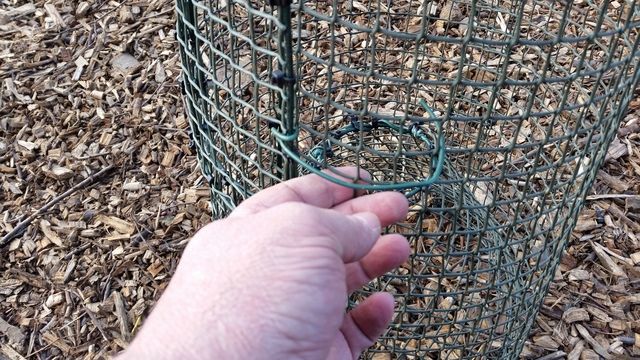
After the catch I now have one trap ready for when I get my licence and enough spare mesh to make a second
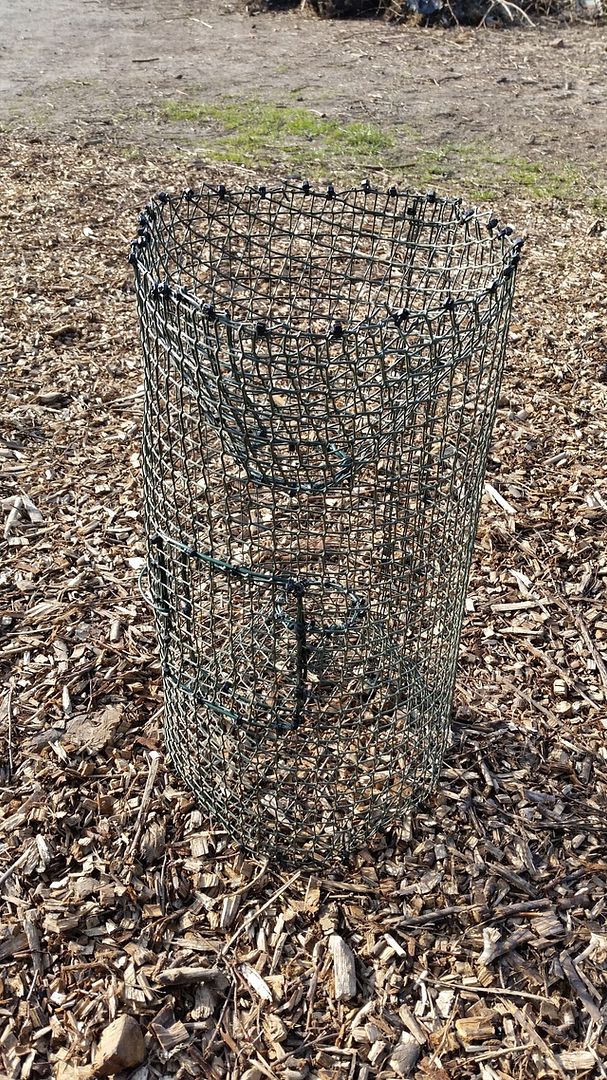
First of all I will say that there are very strict requirements regarding the trapping crayfish within the UK. You may not trap crayfish without permission from the landowner and a licence issued by the Environment agency. On the application form you must state that the dimensions of your trap and that it complies with the requirements laid out in the application form. There is also other information you need to supply on your application such as where and when you intend to trap, what species of crayfish you intend to trap and the reason for trapping them.
If your application is successful then you will be issued a licence tag for each of the traps you intend to use and these have to be fixed to the trap when they are being used.
Another requirement that you must do including filling out a form listing the total number of crayfish and species trapped during the duration of your licence.
Further information can be found in a very useful leaflet entitled "Using the right trap: A guide to Crayfish trapping." issued by the Environment Agency and can be found here.
If you wish to apply for a licence the application form can be found here.
These are the dimensions of a trap that is legal within the UK

Additionally the mesh size cannot be more than 30mm at its widest point.
So first of all you need a roll of mesh, a pair of wire cutters and a load of cable ties

As the mesh is 100cm across I cut a length 60cm long off the roll

I then formed it into a tube 30cm across ensuring that the edges overlapped by 2 squares to for a good seal.

Once the main body of the trap had been formed I needed to make 2 cones to fit in each end. To make these cones I made a semi circle with a radius of 32 cm from a piece of thing fibreglass rod and cut the mesh off at each point the arc crossed. I also measure 2 squares in from the straight edge so I would have an overlap when forming the cone.

Unfortunately I forgot to take a picture of the semicircle of mesh after cutting it out before forming into a cone. When creating the entrance for the crayfish to go through you must make it not greater than 95mm so you don't accidently trap an otter. So to be safe I made a couple rings 90mm across and fitted that to the cone as you can see in the second picture.


Once the cone has been formed it has to be fitted to the main body which, to say the least, is fun as it has a tendency to fall in and catch on the main body.

It was then fixed in place using a lot of cable ties so there weren't any gaps anywhere. Once you've fitted one cone you get to repeat the fun on the other end...

After fitting the cones you need to cut a door so you can get the crayfish out

As the mesh I was using was a bit flexible I reinforced the edge of the entrance with wire so there was no give in that area.

I then cut a door out of spare mesh and fitted it, again reinforcing it with wire to ensure a good seal

Once the door was mounted I then fitted a simple wire catch which was bent around the mesh to lock it in place

After the catch I now have one trap ready for when I get my licence and enough spare mesh to make a second

Last edited:
